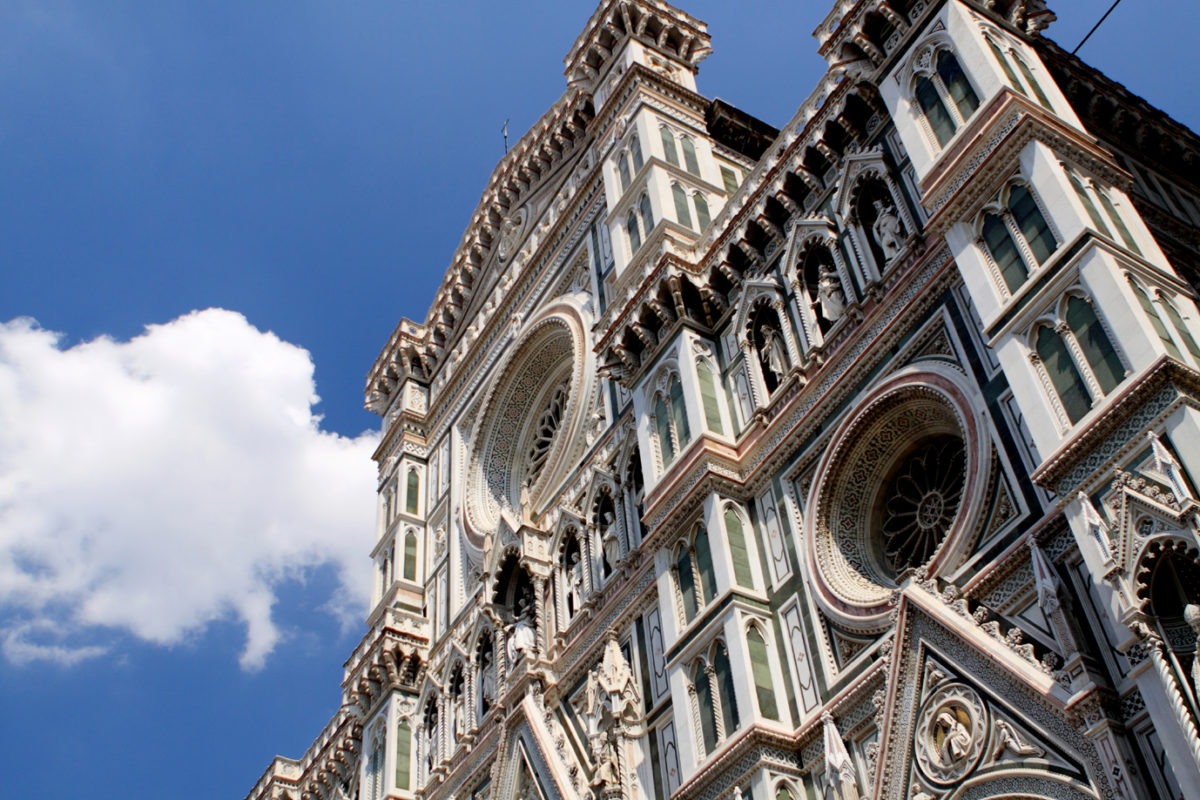The Gothic cathedrals in Italy. The style that led to the Renaissance.
Gothic style in Italy did not have the same development of other European countries and had a lesser duration. It never reached a full cultural and artistic acceptance, but it declined to a particular classical vision. Will be just these differences of interpretation which then lead to the Renaissance.

Santa Maria del Fiore in Florence is the most important Gothic Cathedral in Italy, both in terms of artistic and historical meaning. The Duomo of Florence which was fundamental to the development of Italian architecture. Built starting in 1296 within a general work of affirmation of Florence who had achieved its hegemony on the whole Tuscany. Santa Maria del Fiore aim was to bring together all peoples of Tuscany and dominate the religious buildings of Siena and Pisa.
The initial project was carried out by Arnolfo di Cambio, already responsible for various urban solutions, which followed before Giotto (for three years) then several architects up to the arrival of Filippo Brunelleschi, who completed the famous dome in 1436, opening at Renaissance. But the size of the dome and the only apparent homogeneity from marble that defines it to be a typical element of Italian Gothic. It must be said to be true that in fact the most visible parts of the work were completed in the nineteenth century in a style that can be described as gothic revival.
The Cathedral was actually used since the completion of the dome and became the focal point of political life of the time. A Council was held, was killed Giuliano de’ Medici and his brother Lorenzo il Magnifico was wounded during the Pazzi conspiracy.

The Basilica di San Francesco in Assisi is the place that was built to hold the remains of the saint. Wanted by Pope Gregory IX as special church was finished in 1230 and was assigned by the same Pontiff to the Franciscan friars.
According to the narrative was the same Francis to indicate the place where he wanted to be buried. Specifically the lower hill of the city where they were buried the sentenced by justice. The Hill renamed Collis Paradisi was built the new basilica, at the northwestern edge of the walled city. The basilica was a clear departure from the typical Franciscan penalty because Francesco was already renowned internationally. On this building the philosophy of Francis was observed mainly in figurative decorations describing the bibles to the poor illiterate. This important segment of the population was in fact istruibile exclusively through images.
In the complex history that has marked the evolution of the order, the basilica was always guarded by so-called friars of the community, the group that went to form the order of friars minor conventual.
The architecture of the Franciscan order is a declination to her Gothic building. It allowed the main innovations of the Ile de France cathedrals, but in moderate form and asceticism.

Basilica of Saint Anthony in Padua has come to the present form of the basilica as a result of three reconstructions, which succeeded over seventy years. The Church of Santa Maria Mater Domini has been incorporated over time into the Basilica as a chapel of the Madonna Mora. Close to it was built in 1229, the friars convent.
Died in 1231 at Arcella was at the time a monastery, his body was carried away and buried in the Church of Santa Maria Mater Domini respecting his wishes. The evolution of the Church passed through a first nucleus of a Franciscan church with a single nave; were then added the two aisles and eventually turned the whole thing into the beautiful building that we admire today.




